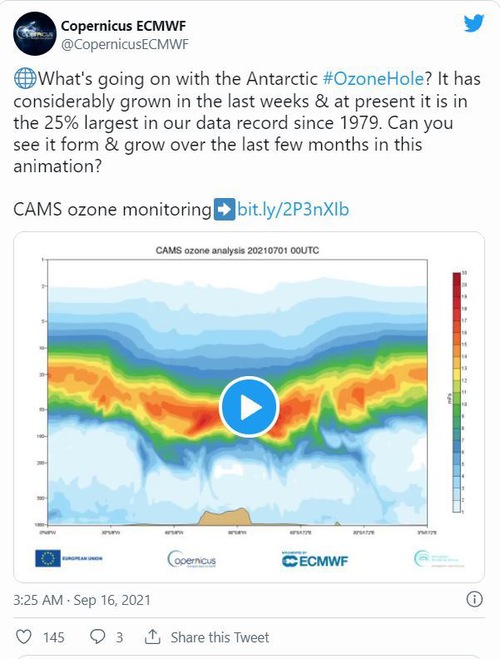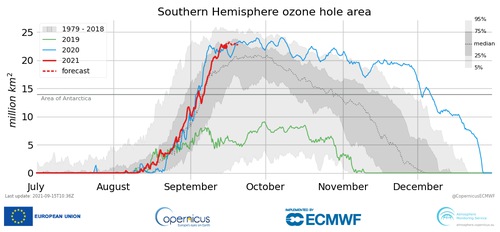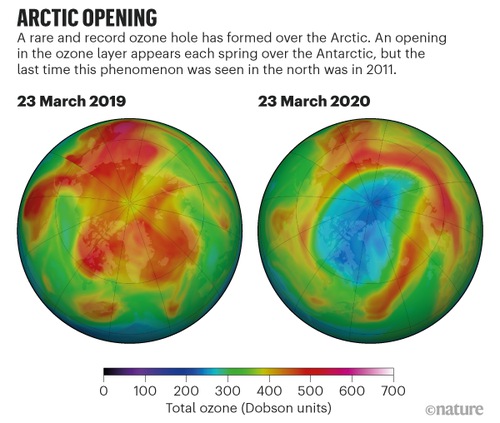(Minghui.org) The Copernicus Atmosphere Monitoring Service (CAMS), an agency that operates under the European Commission, announced on September 16 that scientists found the hole in the ozone over Antarctica had increased significantly since early September. It is now larger than Antarctica itself.
The hole in the ozone over Antarctica expands and shrinks every year. It is usually the largest from mid-September to mid-October. By December, it generally shrinks to its smallest size.
“This year, the ozone hole developed as expected at the start of the season,” said CAMS director Vincent-Henri Peuch in a statement. “Now our forecasts show that this year’s hole has evolved into a rather larger than usual one.
“We cannot really say at this stage how the ozone hole will evolve. However, the hole this year is remarkably similar to the one in 2020, which was among the deepest and the longest-lasting—it closed around Christmas—in our records since 1979,” he added.


 Tweets by Copernicus ECMWF (The European Centre for Medium-Range Weather Forecasts), which operates the CAMS: The ozone hole in the southern hemisphere increased significantly from 1979 to 2021.
Tweets by Copernicus ECMWF (The European Centre for Medium-Range Weather Forecasts), which operates the CAMS: The ozone hole in the southern hemisphere increased significantly from 1979 to 2021.
According to an article in Nature in March 2020, a large ozone hole about three times the size of Greenland was also observed over the Arctic.
“A vast ozone hole—probably the biggest on record in the north—has opened in the skies above the Arctic,” the article stated. “It rivals the better-known Antarctic ozone hole that forms in the southern hemisphere each year.” It was later reported that the hole closed several months later.
 Ozone hole over the Arctic in March 2020 (image source: NASA Ozone Watch)
Ozone hole over the Arctic in March 2020 (image source: NASA Ozone Watch)
All content published on this website is copyrighted by Minghui.org. Minghui will produce compilations of its online content regularly and on special occasions.
Category: News & Events









